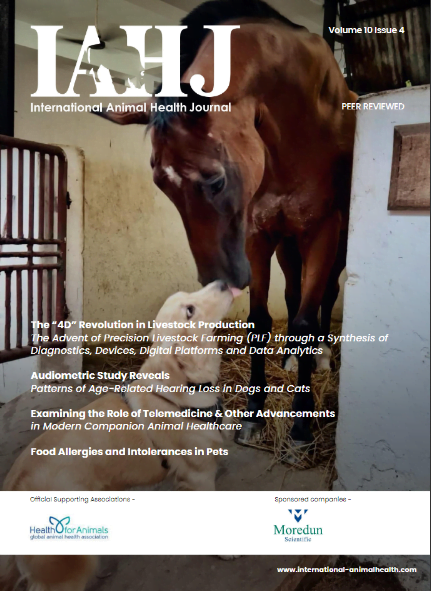Physical activity is an important component of a healthy lifestyle and has multiple health benefits. Asaf Dagan at PetPace LTD and Prof. Mickey Scheinowitz at Tel Aviv University, analyse biometric data of 280 dogs with accumulated 7,683 days to develop a Canine Physical Activity Index that applies accepted methods of assessing physical activity in people. The Index considers the Intensity and Volume of the activity, expressed in terms of pulse rate, to provide an accurate and quantifiable assessment of the level of physical activity, above and beyond simple activity trackers.
Extract:
‘Calculation of a Physical Activity Index for Dogs Using Smart Collars’
Physical activity is an important component of a healthy lifestyle and has multiple health benefits. We analysed biometric data of 280 dogs with accumulated 7,683 days to develop a Canine Physical Activity Index that applies accepted methods of assessing physical activity in people. The Index considers the Intensity and Volume of the activity, expressed in terms of pulse rate, to provide an accurate and quantifiable assessment of the level of physical activity, above and beyond simple activity trackers. Monitoring physical activity in dogs, quantifying it, and providing a numeric scale for comparison and improvement, can be a valuable tool in advancing dogs’ health and maintaining wellbeing.
Background
The health benefits of physical activity are well documented. A physically active lifestyle is an important component of health and wellbeing, and led the American Heart Association to recommend regular physical activity for adults and monitoring and assessing their activity through the use of wearable devices. Public health recommendations for physical activity include specific guidelines for intensity and length of activity.
In a similar fashion, attention to pets’ health and fitness level is increasing in recent years and various pet-related sports are gaining popularity. However, current guidelines for canine physical activity and definitions of physical fitness are vague and are frequently tied to a specific type of activity (e.g., running, agility).
The goal of this work was to define a measure of physical activity in dogs. This measure will provide a quantifiable assessment of dogs’ physical activity as a health indicator as well as a basis for personalized recommendations for improvement.
Click the download button below to read the complete version of ‘Calculation of a Physical Activity Index for Dogs Using Smart Collars’ by Asaf Dagan at PetPace LTD and Prof. Mickey Scheinowitz at Tel Aviv University











